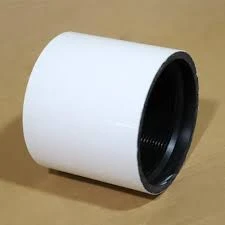- Afrikaans
- Albanian
- Amharic
- Arabic
- Armenian
- Azerbaijani
- Basque
- Belarusian
- Bengali
- Bosnian
- Bulgarian
- Catalan
- Cebuano
- Corsican
- Croatian
- Czech
- Danish
- Dutch
- English
- Esperanto
- Estonian
- Finnish
- French
- Frisian
- Galician
- Georgian
- German
- Greek
- Gujarati
- Haitian Creole
- hausa
- hawaiian
- Hebrew
- Hindi
- Miao
- Hungarian
- Icelandic
- igbo
- Indonesian
- irish
- Italian
- Japanese
- Javanese
- Kannada
- kazakh
- Khmer
- Rwandese
- Korean
- Kurdish
- Kyrgyz
- Lao
- Latin
- Latvian
- Lithuanian
- Luxembourgish
- Macedonian
- Malgashi
- Malay
- Malayalam
- Maltese
- Maori
- Marathi
- Mongolian
- Myanmar
- Nepali
- Norwegian
- Norwegian
- Occitan
- Pashto
- Persian
- Polish
- Portuguese
- Punjabi
- Romanian
- Russian
- Samoan
- Scottish Gaelic
- Serbian
- Sesotho
- Shona
- Sindhi
- Sinhala
- Slovak
- Slovenian
- Somali
- Spanish
- Sundanese
- Swahili
- Swedish
- Tagalog
- Tajik
- Tamil
- Tatar
- Telugu
- Thai
- Turkish
- Turkmen
- Ukrainian
- Urdu
- Uighur
- Uzbek
- Vietnamese
- Welsh
- Bantu
- Yiddish
- Yoruba
- Zulu
seamless pipe
Understanding Seamless Pipes Types, Manufacturing, and Applications
Seamless pipes are a fundamental component in various industries, renowned for their strength, durability, and resistance to pressure. Unlike traditional welded pipes, seamless pipes are manufactured from a solid round billet that is heated and then pushed or pulled through a die to create the desired pipe shape. This process eliminates any seams or welds, resulting in a pipe that can withstand high levels of stress and pressure, making them an essential element in many engineering and construction applications.
Manufacturing Process
The manufacturing process of seamless pipes involves several critical steps. Initially, a solid steel billet is heated in a furnace to a temperature ranging from 1200 to 1400 degrees Celsius, allowing the metal to become malleable. Once the billet achieves the required temperature, it is then pierced using a piercer machine to create a hollow tube. This technique not only generates a seamless structure but also ensures that the material retains its integrity during the process.
Following this, the hollow tube undergoes elongation, where it is further stretched to achieve the desired diameter and length. This can be accomplished through various methods, including rotary piercing and elongation, as well as extrusion. After the desired dimensions are reached, the pipe is cooled and annealed, which involves heating and then cooling to relieve internal stresses and improve metallurgical properties.
The final stage includes surface treatment to remove any imperfections, ensuring a smooth finish for applications where aesthetics are crucial. This can involve processes such as pickling, oiling, or even galvanizing to enhance corrosion resistance. The quality of the seamless pipes is carefully tested through various methods, including hydrostatic tests, ultrasonic inspection, and eddy current tests, to ensure they meet the required industry standards.
Types of Seamless Pipes
Seamless pipes can be categorized based on various criteria such as material, size, and application
. The most common materials used include carbon steel, alloy steel, stainless steel, and even specialized metals like titanium or nickel alloys, each suited for different applications. For instance, carbon steel seamless pipes are widely used in construction, oil and gas transportation, and manufacturing due to their high strength and cost-effectiveness.seamless pipe

Stainless steel seamless pipes, known for their excellent corrosion resistance and aesthetic appeal, are commonly utilized in industries requiring high hygiene standards, such as food processing, pharmaceuticals, and chemical manufacturing. Alloy seamless pipes, which incorporate elements such as chromium and molybdenum, are preferred in high-temperature applications like power plants and refineries due to their ability to withstand extreme conditions.
Applications of Seamless Pipes
The applications of seamless pipes are extensive, spanning across multiple sectors. In the oil and gas industry, they are utilized for drilling and as pipelines to transport crude oil and natural gas. Their inherent strength and ability to withstand high pressure make them suitable for this critical infrastructure.
In the construction industry, seamless pipes are employed for structural applications, including frames for buildings and bridges, due to their high tensile strength. Moreover, the automotive industry uses seamless pipes in manufacturing exhaust systems and hydraulic components, where safety and reliability are paramount.
Additionally, seamless pipes play a significant role in the pharmaceutical and food industries, where ensuring the purity of fluids is crucial. The absence of seams in these pipes minimizes the risk of contamination, making them ideal for transporting sensitive materials.
Conclusion
In summary, seamless pipes represent a blend of innovative manufacturing techniques and diverse applications across various industries. Their superior strength, resistance to pressure, and versatility position them as integral components in modern engineering. By understanding the production process, types, and applications of seamless pipes, industries can make informed choices that enhance efficiency and safety in their operations. As technology continues to advance, the future holds even more potential for seamless pipe applications, promising improvements in materials and manufacturing processes.
-
Tubing Pup Joints: Essential Components for Oil and Gas OperationsNewsJul.10,2025
-
Pup Joints: Essential Components for Reliable Drilling OperationsNewsJul.10,2025
-
Pipe Couplings: Connecting Your World EfficientlyNewsJul.10,2025
-
Mastering Oilfield Operations with Quality Tubing and CasingNewsJul.10,2025
-
High-Quality Casing Couplings for Every NeedNewsJul.10,2025
-
Boost Your Drilling Efficiency with Premium Crossover Tools & Seating NipplesNewsJul.10,2025







